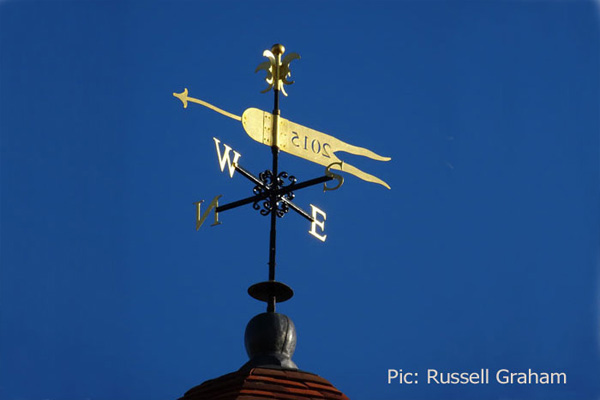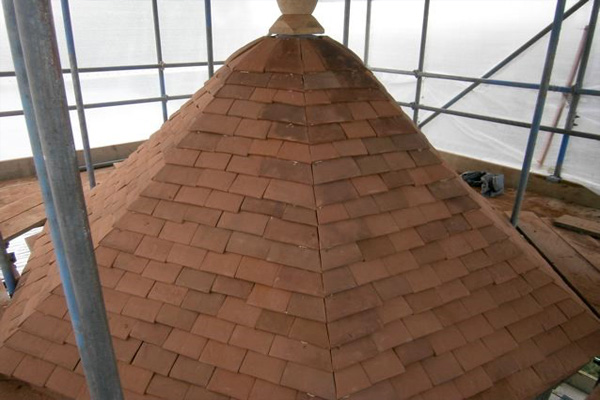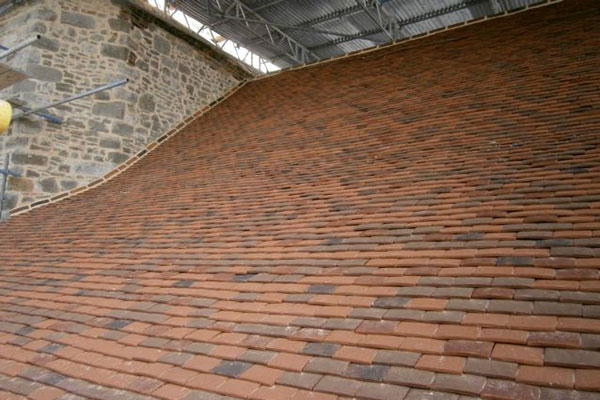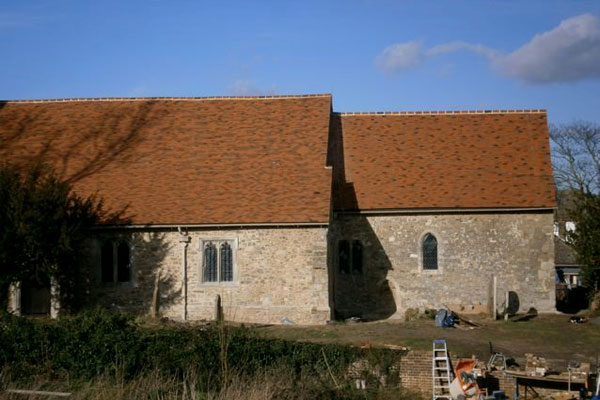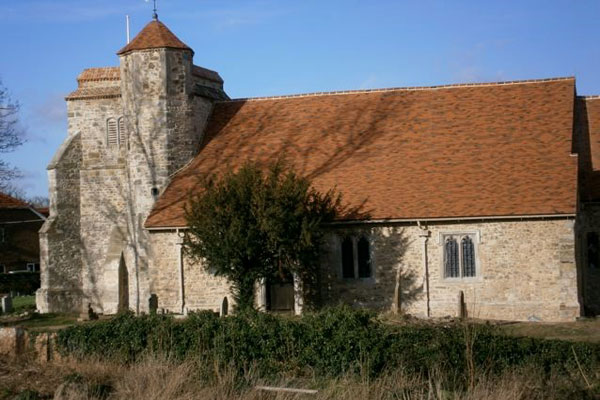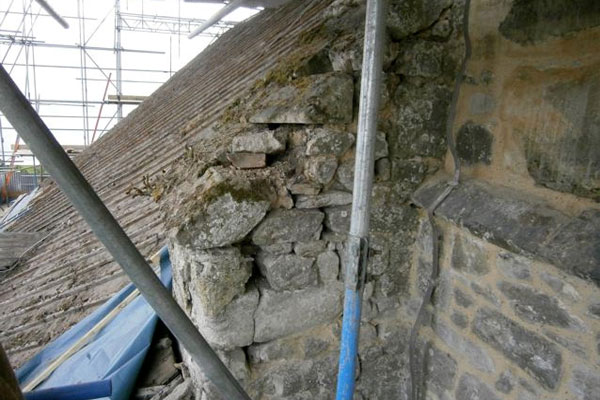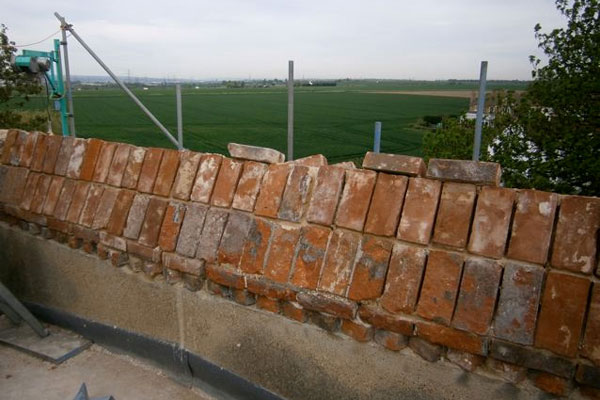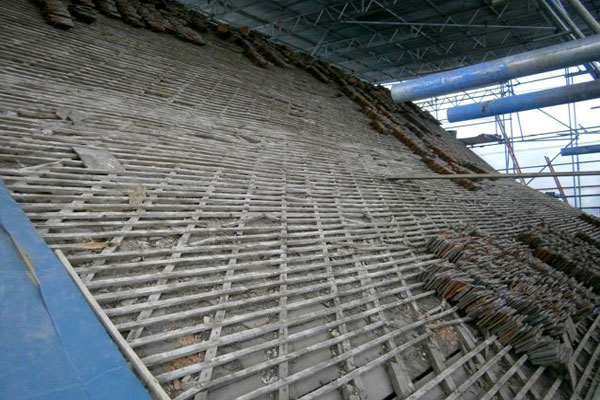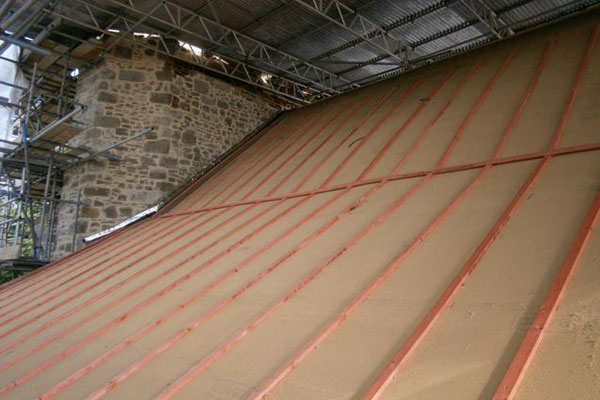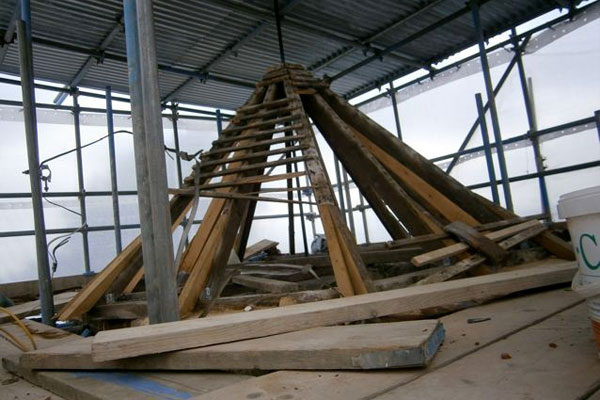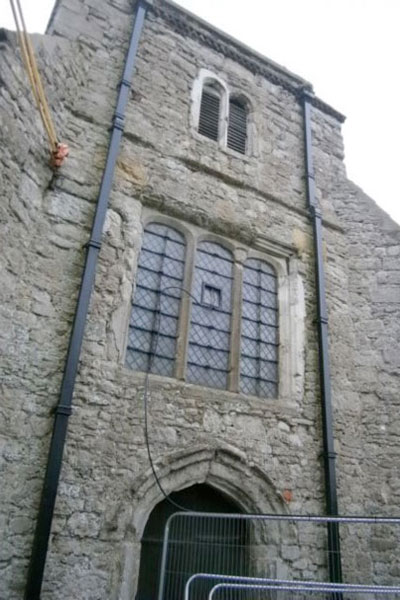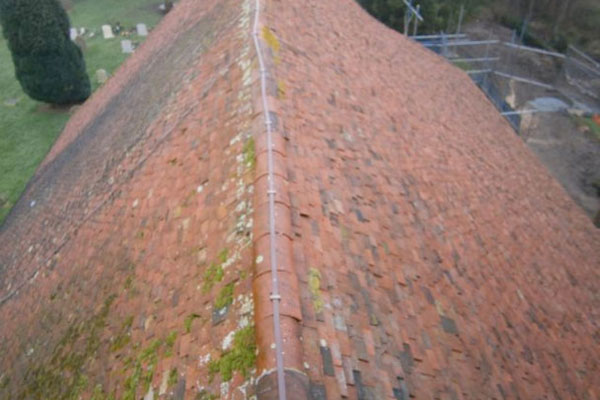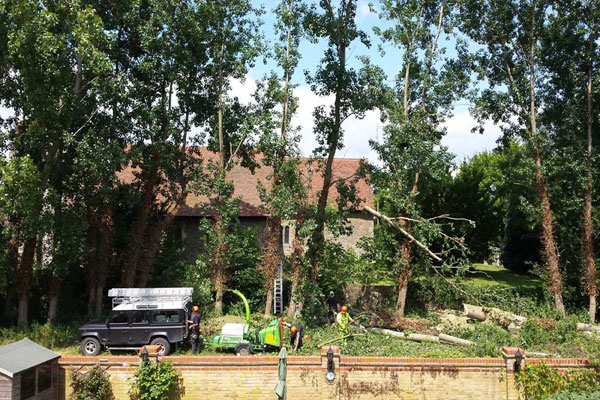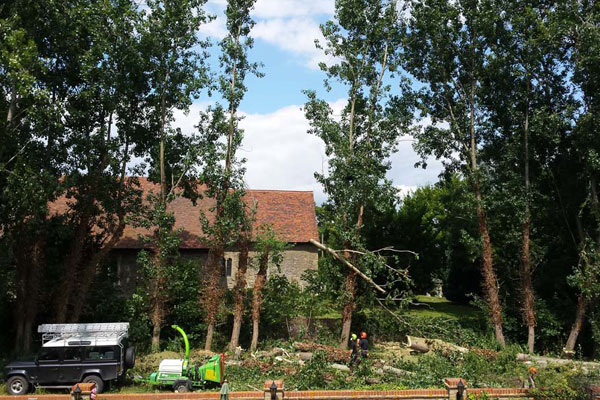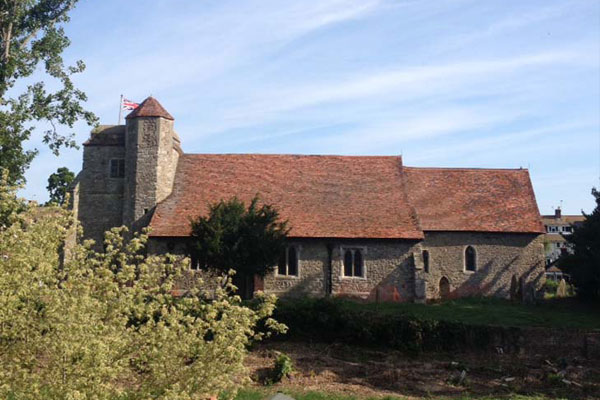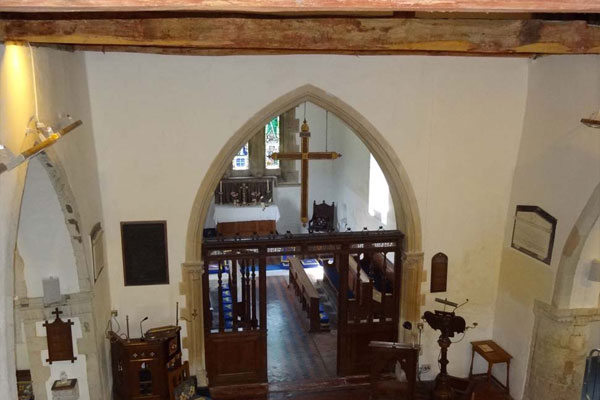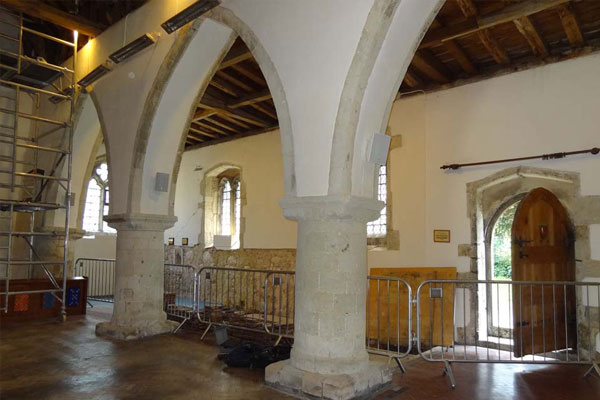Restoration
Whilst this was being done, grouting and pointing of the stonework was being done at high levels. Deterioration of some buttresses made it necessary to rebuild them and in some places, to introduce new Kentish ragstone, (quarried near Maidstone).
The church has just been informed that the they have been given a very generous grant of £215,000 from the Heritage Lottery Fund to enable the church to be reroofed, have extensive repairs to the ancient tower and install an accessible toilet within the church – very handy for the extra visitors the church is now attracting! It is hoped this work can start in the very near future on our next project phase which will preserve the church for generations to come. (Pictures: Ian Bett).
It was in 1898 that Stoke Church had its last major overhaul. Since then regular maintenance has been carried out to maintain the building.
The church is built on London clay which has a habit of moving when it gets very dry. Over the last fifteen years the movement has worsened with the effect that the South aisle of the church, which was added about 100 years after the main church was built, has moved away from the main building. This has caused cracking in the stonework and disturbance to the roof.
A plan has been devised to underpin the aisle using concrete beams supported by piles, driven 15 meters into the ground, and to carry out urgent stone work repairs. Preliminary investigations carried out by archaeologists have found a double vault inside the aisle, the footings of the original church before the tower was built and burial sites near to the church outer walls. Positioning the piles to avoid important archaeology is an interesting puzzle.
The work was scheduled to start in late June 2013 but the discovery of Pippistelle bats has delayed the work until after their breeding season (May to September). The underpinning work will start in late September 2014 and the stonework repairs will follow this. At the same time plans are underway to reroof the church, carry out stonework repairs to the tower and to install an accessible toilet within the church.
Since 2013 the PCC of the church of St. Peter and St. Paul Upper Stoke, Kent has been working with architect Rena Pitsilli-Graham. Together they have researched and investigated the history and current structural needs of the church to inform the successful bids to the Heritage Lottery Fund. Here is Ian and Renas’ restoration diary…
Below are some pictures of the poplar trees being cut down by the boundary wall behind the church in June 2014, removed because their roots were drawing out ground moisture leading to damage to the church building and causing subsistence. (Pictures left and middle, J Plumb, picture right Phillipa Bett).
The roof posts are King posts; they should have had 4 braces (branches) but 2 were removed for some reason, probably in the 1898 restoration which replaced most of the rafters. The king posts and the tie beams on which they sit are early timbers date to be hopefully ascertained by dendrochronology when we start work in 2014, (Pictures below Rena Pitsilli-Graham).


